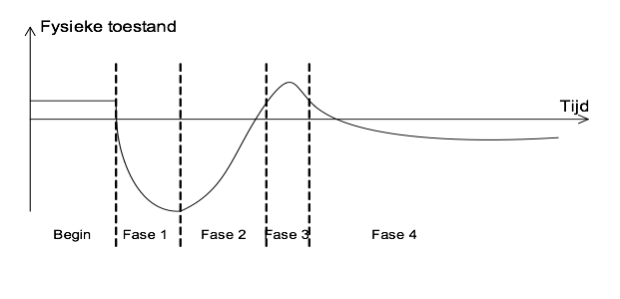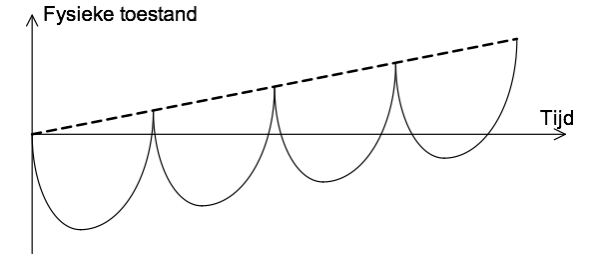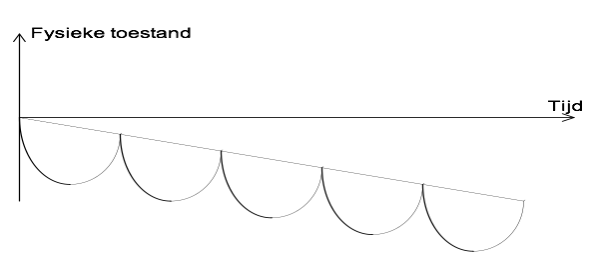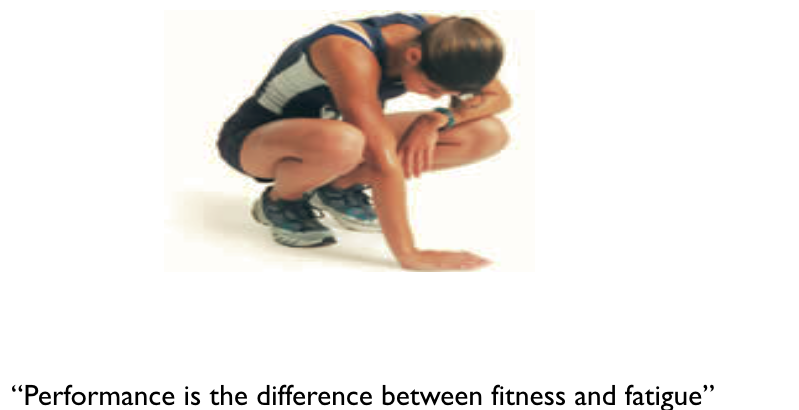Yes, you can do too much! rugby is all about hard work, what happens when we work too hard?
In the Elite sportperformance it is all about load and recovery, imagine the impact on running costs for a professional organisation when the players are not fit enough to finish a whole season. You want to know how much a player can handle right? More importantly, you may want to know if players are burnt-out.
How is this then for our grass roots rugby, do we share this concern? Surely we want our amateur players to do well. Player well-fare is now key.
What is overtraining syndrome (OTS)?
Before we can go into this a (very) brief recap of important training principles and some graphs to further help / confuse you. Why do we train and what do we want to achieve?
- Training is the systematic administration of an adequate training stimulus with the aim of improving performance.
- This ‘translates’ as to overload the athlete in a controlled manner. The homeostasis in the body is deliberately disturbed.
- We call this the overload & super compensation principle.
So, a training is effective when the stimulus requires the players to work with a higher intensity than their bodies are used to:

So, right after we worked hard, our physical disposition has a dip and then recovers to a higher level than we started with: the super compensation.

The above graph shows what we want to achieve when we string the phases 1-3 of the first graph together.

When we mess this timing up, the recovery phase is not completed and we see the downward graph above. This eventually will lead to the overtraining situation: high intensity in combination with insufficient recovery.
More aspects in over-training
Other factors are:
- Too much stress on physical, social and mental aspect;
- When the mind is too strong for the body;
There are different types of overtraining:
- Mechanical overtraining (functional);
- Metabolical overtraining (overreaching);
- Overtraining syndrome (staleness);
How do you recognise overtraining?
So we do not what to see our players in this situation. It is important to learn to recognise the symptoms of overtraining and understand how to prevent it. We have two types:
| The "SYMPATICUS" is when: | We have the "PARASYMPATICUS" when: |
|---|---|
| The stimulus processes dominate the behaviour and higher alertness; | Reduced alertness, weakness ad reduced activity; |
| Limited and delayed recovery after a game / training; | Low in energy; |
| Easily diagnostic, player feels ill; | |
| Look for: | The PARASYMPATICUS is more difficult to recognise because the symptoms are less obvious. Look for: |
| Increased nervousness; | low rest pulse; |
| Being quickly irritated; | Normal appetite; |
| Loss of concentration; | More sleepy; |
| Difficulties to get asleep and poor sleep quality; | Apathy; |
| Poor performance; | Tiredness; |
| Reduced appetite; | Depression; |
| Weight Loss; | Dizzyness; |
| Increased morning / rest pulse; | Low blood sugar content; |
| Sweating quicker; |
Checklist for overtraining
A handy checklist for you to use:
- Do you feel you tire more quickly lately?
- Do you feel you are not rested completely?
- Is you performance down?
- Is it more of an effort to train?
- Would you like to skip a training?
- Are your muscles stiff or more painful?
- Do you irritate more quickly?
- Do you have difficulty falling asleep?
- Did you loose your appetite?
- Do you feel the training is boring?
- Are you less motivated to work hard?
- Do you have less fun playing rugby?
For your convenience I have made a Excel Spreadsheet for you to customise. You can find it in the free download section.
How to act when overtrained?
Once you determined a player is overtrained, some simple measures can be taken:
- Complete rest;
- Reduction of specific training and training load;
- Consider medication;
- Look and review diet;
The player will recover in one-two weeks for Basedoide overtraining and for Addisonoide overtraining weeks to months.
Preventive measures for overtraining syndrome (OTS)
Peter Keen, coach of famous British cyclist Chris Boardman has a all telling quote:
“The body does not get fitter through exercise, it gets fitter through recovering from exercise”
So, in line with this preventive measures seem pretty obvious:
- Take time to rest, use ‘tapering’ principle;
- Set-up a recovery training;
- Use different ways to train: work with ball, crosstraining, small side games;
- Stick to a well balanced diet;
- Massage and good hygiene;
- Consider swimming, sauna;
- Correct guidance on recovery;
- Break the season in periods, allow for recovery;
Top Tips
1. Take well know stress factors into account when setting up a trainingschedule:
-
- Like exams / midterms with Under Under16/18 teams;
2. Be aware of your body:
-
- Which signals to react to and which not;
- Learn your limits;
3. Learn to make choices!
-
- Life is more than rugby (yes, it is);
- Have more than just rugby and school/work in your life;
- Make choices what to spent time on and what not;
4. Set-up a Training logbook in combination with a daily questionnaire on well-being (POMS)
-
- Restpulse – morningpulse;
- Training intensity (time, intensity, type, performance);
- Perceived intensity (like the Borg score, or a score 1-10);
- Symptoms (tiredness, motivation, strains, etc.);
- Important events in your life (arguments, exams, etc.);
- Sleep quality (length, quality)
This logbook will help you understand load and recovery and how your body reacts to it. Also, it will be a reference for later use. If you have this organised centrally, it is extremely important to educate your team on this.
Conclusion
- “Rest“ (or sleep for that matter) is a very important type of training;
- Train as much as needed, not as much as possible;
- Performance is a cocktail with the right ingredients, failure is just a lack of a proper plan;
- The best treatment of Overtraining Syndrome (OTS) is PREVENTION;
- Medals are not won on the training pitch;
The blog post was based on a presentation of Maurice van Veldhooven that steered me into this topic. Have a look at his LinkedIn profile.
Subscribe and get notified when I add new posts to the Blog;
